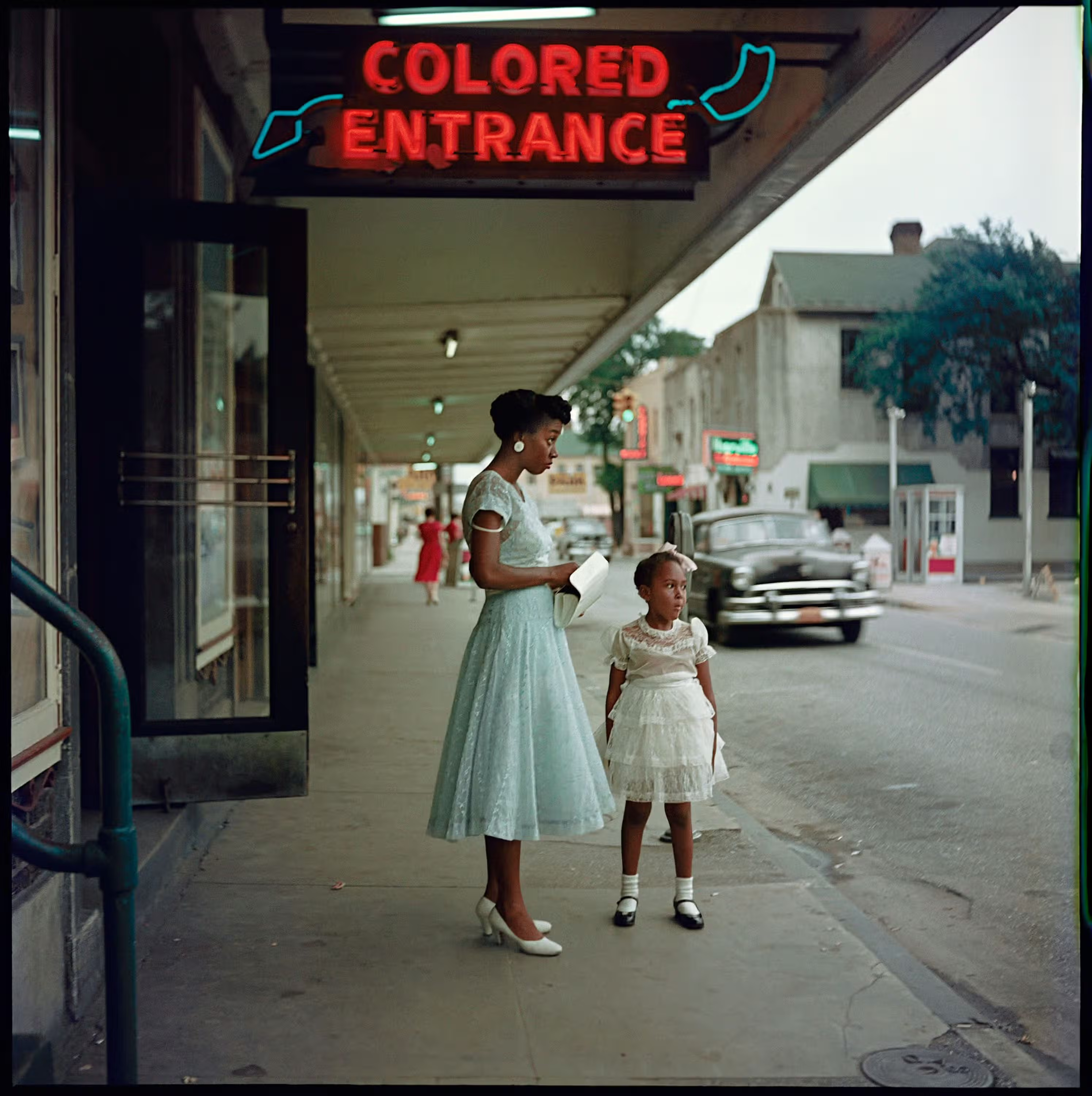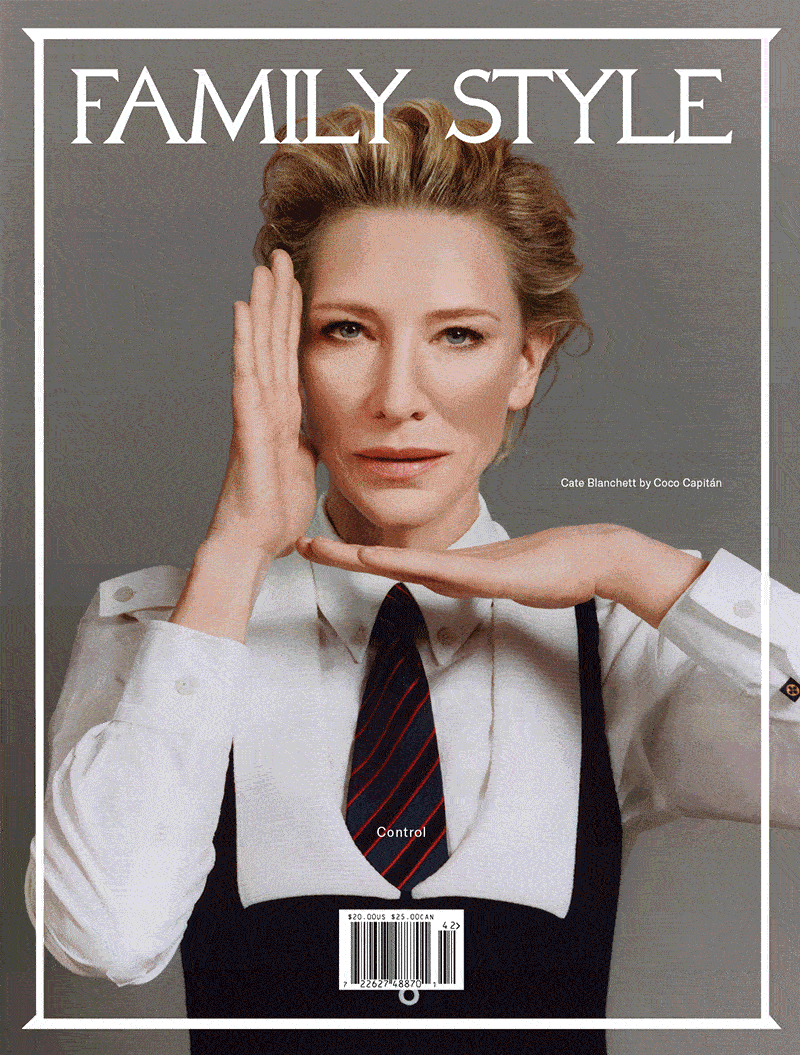
Gordon Parks, Department Store, Mobile Alabama, 1956. Image courtesy of the Gordon Parks Foundation
“America is me. It gave me the only life I know—so I must share in its survival,” Gordon Parks wrote in a 1968 photo essay titled I Am You. “Look at me. Listen to me,” he urged the world. In partnership with the late photographer’s foundation, Pace celebrates his seminal work from 1940 to 1980 in a new exhibition at its Los Angeles gallery.
One work on view, Mr. and Mrs Albert Thornton, Mobile, Alabama, shows an elderly man dressed in a white button-up shirt and tie sitting next to his wife in a floral dress on a red velvet sofa in their Alabama home in 1956. A black-and-white portrait of the couple from early-on in the marriage hangs above them inside the image while other family photos line the glass coffee-table in front. The powerful scene is part of a series of works in which Parks documented the Thortons’ extended family. Nearby in Department Store, Mobile, Alabama, photographed for the same series, Joann Thornton Wilson stands in town with her niece, Shirley Anne Kirksey. Both in formal dresses, they look out from underneath a red neon sign that reads “colored entrance.” Images like these redefined civil rights photography by rejecting an emphasis on violent depictions of Black life.
-min_result.avif)
Gordon Parks, American Gothic, Washington, D.C., 1942. Image courtesy of The Gordon Parks Foundation.
A self-proclaimed “objective reporter with a subjective heart,” Parks became the first Black photographer for Life magazine, where he covered everything from community to politics to popular culture. But it was the beauty and resilience of Black America in the face of adversity that held his interest most. Following his passing in 2006 at the age of 93, Parks’ work has remained a pertinent time capsule.
Curated by Kimberly Drew, the exhibition includes intimate, unflinching portraits of everyday Black life. In American Gothic, Washington DC, 1942, Farm Security Administration (FSA) cleaning woman Ella Watson poses in front of an American flag with a mop and broom. The image recalls Grant Wood’s 1930 painting American Gothic, which depicts a white farmer holding a pitchfork, standing next to his daughter in front of their home: a symbol, and critique, of rural, working-class life in the Midwest during the Great Depression. Parks’ image deconstructs the American ideal even further, underscoring the contrast between the freedom associated with patriotism and the discrimination experienced by Black Americans. More wholly, it prompts the question of what it means to be American.
“Gordon Parks” is on view at Pace Gallery until August 30, 2024 at 1201 South La Brea Avenue, Los Angeles, CA 90019






-min_result.avif)



.avif)

